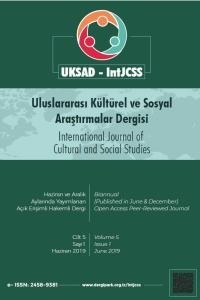Strategies on Sustainability of Historical and Cultural Heritage in Amasra, Turkey
Strategies on Sustainability of Historical and Cultural Heritage in Amasra, Turkey
In our country, historical settlements, in which several civilizations lived in different historical periods, are spatial evidences transmitting from past social, economic and cultural characteristics to today. In the context of sustainability, in order to preserve and transmit of our own historical and cultural heritage to the future generations, it is essential that historical environments should be renovated in regard to the needs of today’s generation, should be re- functioned, and should be taken into account from protection-renovation-development principles point of view. In this paper, urban policy approaches, planning and urban design strategies on sustainability of historical, cultural and natural heritage in Amasra, and an urban design case study have been presented. A 3000 year old settlement, Amasra was added to the UNESCO list, as a candidate, due to the fortifications built in Genoese period. Therefore, sustainability strategies regarding to Amasra have gained more significance
Keywords:
Amasra, conservation-planning-urban design, historical and cultural heritage sustainability,
___
- Erkan, Y K. (2011). Urban regeneration projects in İstanbul and documentary value. ITU A/Z (1): 117-128.
- Güneş, G. (2011). Korunan alanların yönetiminde yeni bir yaklaşım: katılımcı yönetim planları. Ekonomi Bilimleri Dergisi. ISSN: 1309-8020 (Online), 3(1): 47-57.
- Güngör, F. (2014). Private Photograpy Archieve
- Sakaoğlu, N. (1999). Çeşm-i Cihan Amasra, Türkiye Ekonomik ve Toplumsal Tarih Vakfı, ISBN: 975-7306-49-5.
- UNESCO (2015). Operational Guidelines for the Implementation of the World Heritage
- Convention, United Nations Educational, Scientific and Cultural Organization. Web Resources http://www.amasra.bel.tr/amasra.html
- Başlangıç: 2015
- Yayıncı: Mutlu TÜRKMEN
Sayıdaki Diğer Makaleler
Strategies on Sustainability of Historical and Cultural Heritage in Amasra, Turkey
Yemen’de İslam Siyasi Düşüncesinin Şekillenmesinde Mezhep Faktörünün Etkisi
Sağlık Çalışanlarında Psikososyal Risk Faktörlerini Belirlemeye Yönelik Bir Araştırma
Harun KIRILMAZ, Songül YORGUN, Ahmet ATASOY
Hukuk-Ahlak İlişkisi Bağlamında Divan-ı Hikmet
Arap Atasözlerinde Toplumsal Cinsiyet
Osmanlı Dönemi Dokuma Sanatı Ürünlerinden Örnekler
Farklı Din Anlayışlarına Ayrılan Yer Açısından Türkiye’de Cumhuriyet Dönemi Din Öğretimi Programları
Kuzguncuk (Üsküdar) Tarihi Doku Koruma ve Yayalaştırma Projesi
Şeyh Muhammed Sadık Muhammed Yusuf ve Kur’an İlimleri
